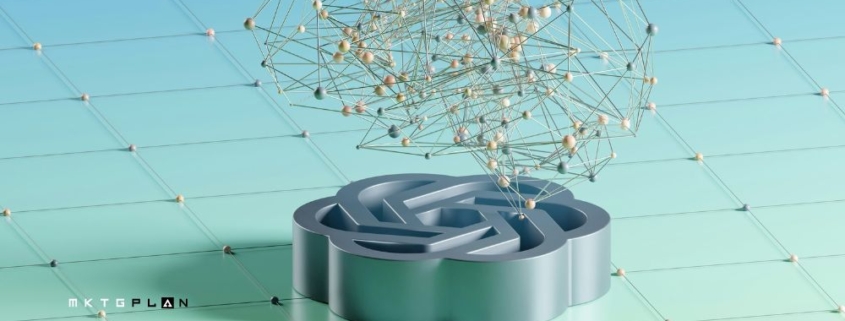OpenAI Unveils Faster, More Powerful GPT-4o and New ChatGPT Features
On Monday, OpenAI unveiled its latest advancements: the new AI model GPT-4o and a desktop version of ChatGPT, both accompanied by an updated user interface. This move represents OpenAI’s ongoing commitment to enhancing the accessibility and functionality of its widely used chatbot.
The upgrade introduces GPT-4o to all users, including those on the free tier, as announced by OpenAI’s Chief Technology Officer Mira Murati during a live-streamed event. Murati highlighted that GPT-4o is “much faster” and boasts enhanced capabilities in text, video, and audio processing. Furthermore, OpenAI plans to enable video chatting with ChatGPT in the near future.
“This is the first time we are making a significant leap forward in user convenience,” Murati stated.
Backed by Microsoft, OpenAI has attracted an investor valuation exceeding $80 billion. Founded in 2015, the company faces the dual challenge of maintaining its leadership in the generative AI market while generating revenue to offset the substantial investments in processors and infrastructure necessary for building and training its models.
GPT-4o: Faster, More Versatile, and Multilingual
The “o” in GPT-4o stands for “omni,” reflecting the model’s ability to handle 50 different languages with enhanced speed and quality. According to Mira Murati, OpenAI’s Chief Technology Officer, GPT-4o will also be accessible via OpenAI’s API, allowing developers to start creating applications with the new model immediately.
Murati noted that GPT-4o is twice as fast as GPT-4 Turbo and comes at half the cost.
During the demonstration, OpenAI team members showcased the model’s audio capabilities. For instance, they asked GPT-4o to help calm someone down before a public speech. OpenAI researcher Mark Chen explained that the model can “perceive your emotion” and handle interruptions from users. Additionally, the team demonstrated the model’s ability to analyze a user’s facial expressions to provide feedback on their emotions.
When a user greeted ChatGPT in audio mode, it responded, “Hey there, what’s up? How can I brighten your day today?”
OpenAI plans to test Voice Mode in the coming weeks, offering early access to paid subscribers of ChatGPT Plus, as mentioned in a blog post. The company also stated that the new model can respond to users’ audio prompts “in as little as 232 milliseconds, with an average of 320 milliseconds, which is similar to human response time in a conversation
Chen demonstrated the versatility of GPT-4o by having it tell a bedtime story. He then asked the model to change its tone to be more dramatic or robotic and even to sing the story.

The new model also excels as a translator, including in audio mode. Chen showcased its ability to translate a conversation between him and Murati, where Murati spoke Italian and Chen spoke English, with the model translating into their respective languages in real-time.
Additionally, the OpenAI team demonstrated GPT-4o’s proficiency in solving math equations and assisting with code writing, making it a formidable competitor to Microsoft’s GitHub Copilot.
This launch marks one of OpenAI’s most significant announcements since the August release of ChatGPT Enterprise, the business tier of their AI chatbot. OpenAI’s Chief Operating Officer Brad Lightcap mentioned to CNBC that ChatGPT Enterprise was developed in less than a year, with contributions from over 20 companies across various sizes and industries.
OpenAI, Microsoft, and Google are leading the generative AI revolution, with companies across various industries rushing to integrate AI-powered chatbots and agents into their key services to stay competitive. Earlier this month, OpenAI’s rival, Anthropic, introduced its first enterprise offering and a free iPhone app.
According to PitchBook, a record $29.1 billion was invested in nearly 700 generative AI deals in 2023, marking a more than 260% increase from the previous year. The market is projected to exceed $1 trillion in revenue within the next decade.
Despite the excitement, there are concerns within the industry about the rapid introduction of untested new services. Academics and ethicists have also raised alarms about the technology’s potential to propagate bias.
Since its launch in November 2022, ChatGPT has become the fastest-growing consumer app in history, now boasting approximately 100 million weekly active users. OpenAI reports that over 92% of Fortune 500 companies are utilizing the platform.
During the event on Monday, Murati emphasized OpenAI’s goal to “demystify the technology.”
“Over the next few weeks, we’ll be rolling out these capabilities to everyone,” she announced.
The new model will initially be available on Tuesday to ChatGPT Plus and Team customers, followed by a later rollout to Enterprise clients, according to a blog post on Monday. Free users of ChatGPT will have access starting Monday, but with usage limits. ChatGPT Plus users will enjoy five times more message capacity than free users, while ChatGPT Team and Enterprise clients will have even greater usage allowances.
Murati concluded the livestreamed event by expressing gratitude to Nvidia CEO Jensen Huang and his team for providing the advanced graphics processing units (GPUs) essential for powering OpenAI’s technology.
“I want to thank the incredible OpenAI team, and also extend my thanks to Jensen and the Nvidia team for supplying the advanced GPUs that made today’s demo possible,” she said.
The newest AI model from OpenAI, GPT-4o, is available to users for free. So is it worth paying $20 a month for ChatGPT Plus?
We break the features down:https://t.co/4q40FWdpgn
— WIRED (@WIRED) May 14, 2024







